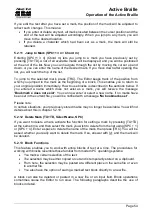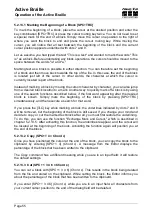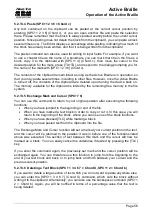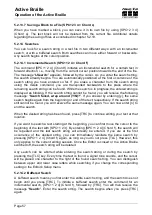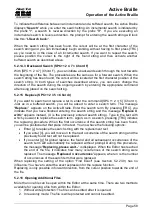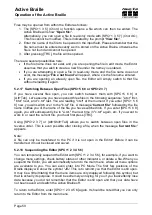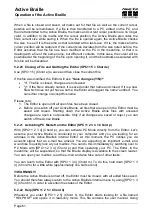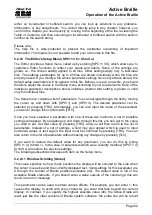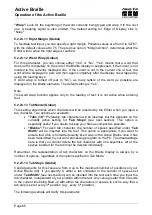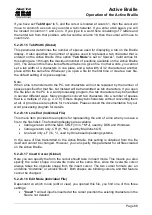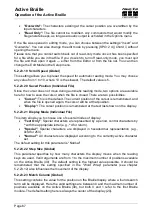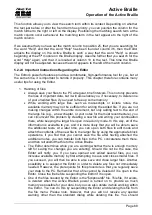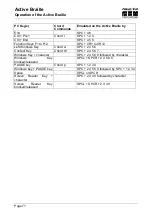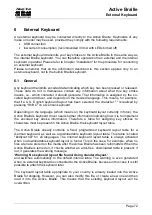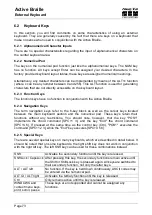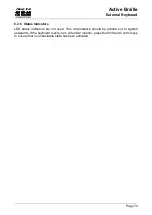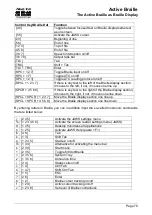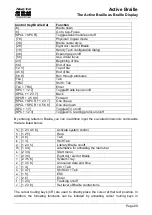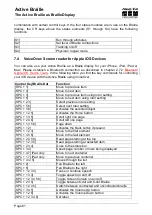
Handy Tech
Elektronik GmbH
Active Braille
Operation of the Active Braille
Page 66
If you have set '
Tab Stops'
to 5, and the cursor is located at column 1, then the cursor will
move to column 6 as soon as you enter a tab character. If you enter a tab again, you will
be located in column 11 and so on. If you type in a word here consisting of 7 letters and
then enter tab from that position, which would be column 18, then the cursor will move to
column 22.
5.2.23.15 Tab Width (Global)
This parameter determines the number of spaces used for displaying a tab on the Braille
display. It also specifies the number of spaces used to represent a tab character that is
entered on the Active Braille if the option
'Tab Mode'
is set to "Spaces". Valid entries for
this setting are 1 through the maximum number of positions available on the Active Braille
(40). The value in this menu item affects all tabs in a given file. In other words, you cannot
set a tab width of 4 characters in one place, and a tab width of 32 characters at another
place within the same file. Whenever you open a file for the first time or create a new file,
the default setting of 4 spaces applies.
Note:
When a file is transferred to the PC, tab characters will not be replaced by the number of
spaces specified for that file, but instead will be transmitted as tab characters. If you open
the file later on the PC in a word processing program, the tab characters may be handled
in several different ways. Many programs convert tab characters into a number of spaces
that is a multiple of 2 (e.g., 4 or 8). Others display tab characters without converting them
at all, or provide several options for conversion. Please consult the documentation for your
word processing program for details.
5.2.23.16 Line End (Individual File)
This menu item provides three options for representing the end of a line when you save a
file to the flash disk. The following displays are available:
Carriage return with line feed, CRLF (\\r\\n, ^M^J), used by DOS and Windows.
Carriage return only, CR (\\r, ^M), used by Macintosh OS.
Line feed only, LF (\\n, ^J, used by Unix-based operating systems.
In the case of files transmitted to the Active Braille, this setting is obtained from the file
itself and cannot be changed. However, you can specify this parameter for all files created
on the Active Braille.
5.2.23.17 Insert Cursor (Global)
Here you can specify the form the cursor should take in insert mode. This means you also
specify the cursor shape in overwrite mode at the same time, since the overwrite cursor
always takes the opposite shape from the insert cursor. The two cursor formats are: an
underline “Underline” or a block “Block”. Both shapes are blinking cursors, and that feature
cannot be changed.
5.2.23.18 Edit Mode (Individual File)
Dependent on which mode (edit or view) you opened this file, you find one of this three
settings:
"Insert":
All text input is inserted at the cursor position the existing characters in the
file are not deleted.



